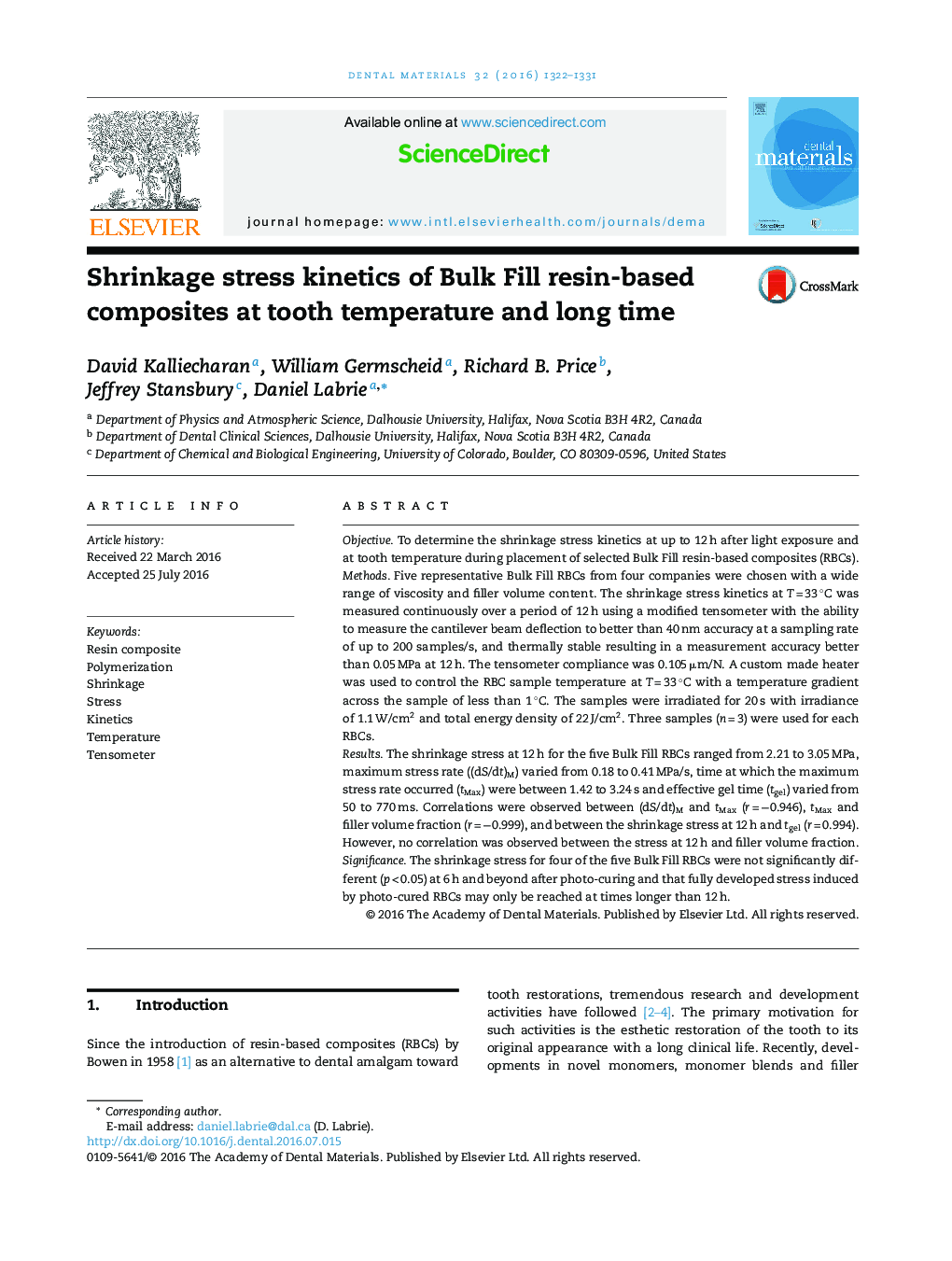| Article ID | Journal | Published Year | Pages | File Type |
|---|---|---|---|---|
| 5433194 | Dental Materials | 2016 | 10 Pages |
â¢We modified a tensometer with increased data collection rate and accuracy.â¢Five Bulk Fill resin-based composites (RBCs) were investigated at T = 33 °C.â¢At times â¥6 h, the shrinkage stress mean value for four RBCs were very similar.â¢Correlations were observed among several shrinkage stress kinetics parameters.
ObjectiveTo determine the shrinkage stress kinetics at up to 12 h after light exposure and at tooth temperature during placement of selected Bulk Fill resin-based composites (RBCs).MethodsFive representative Bulk Fill RBCs from four companies were chosen with a wide range of viscosity and filler volume content. The shrinkage stress kinetics at T = 33 °C was measured continuously over a period of 12 h using a modified tensometer with the ability to measure the cantilever beam deflection to better than 40 nm accuracy at a sampling rate of up to 200 samples/s, and thermally stable resulting in a measurement accuracy better than 0.05 MPa at 12 h. The tensometer compliance was 0.105 μm/N. A custom made heater was used to control the RBC sample temperature at T = 33 °C with a temperature gradient across the sample of less than 1 °C. The samples were irradiated for 20 s with irradiance of 1.1 W/cm2 and total energy density of 22 J/cm2. Three samples (n = 3) were used for each RBCs.ResultsThe shrinkage stress at 12 h for the five Bulk Fill RBCs ranged from 2.21 to 3.05 MPa, maximum stress rate ((dS/dt)M) varied from 0.18 to 0.41 MPa/s, time at which the maximum stress rate occurred (tMax) were between 1.42 to 3.24 s and effective gel time (tgel) varied from 50 to 770 ms. Correlations were observed between (dS/dt)M and tMax (r = â0.946), tMax and filler volume fraction (r = â0.999), and between the shrinkage stress at 12 h and tgel (r = 0.994). However, no correlation was observed between the stress at 12 h and filler volume fraction.SignificanceThe shrinkage stress for four of the five Bulk Fill RBCs were not significantly different (p < 0.05) at 6 h and beyond after photo-curing and that fully developed stress induced by photo-cured RBCs may only be reached at times longer than 12 h.
